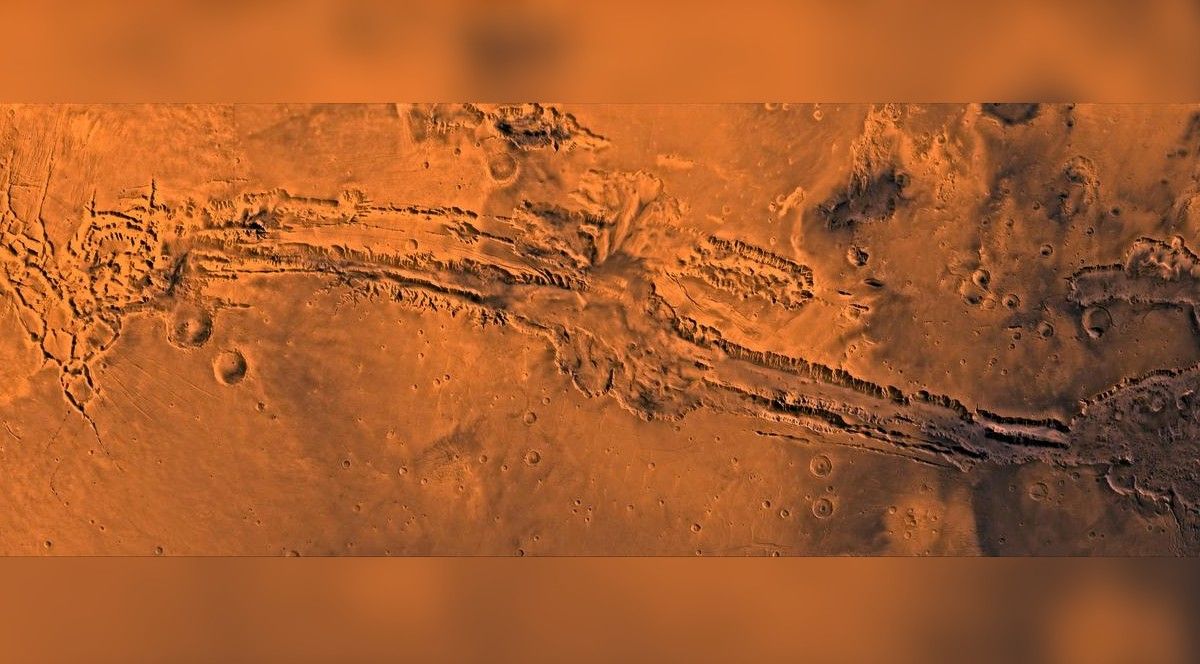
NASA’s marsquake-hunting lander has detected its two largest seismic events to date — and on the far side of the planet, no less.
NASA’s InSight lander touched down on Mars in November 2018 carrying the most sensitive seismometer ever designed. Since the mission’s arrival, it has detected countless events dubbed marsquakes, using the signals to map the planet’s interior. But the two newly announced quakes were something special, according to scientists on the mission.
“Not only are they the largest and most distant events by a considerable margin, [the event dubbed] S1000a has a spectrum and duration unlike any other event previously observed,” lead author Anna Horleston, a seismologist at the University of Bristol in the U.K., said in a statement released by the Seismological Society of America, which published the new research. “They truly are remarkable events in the Martian seismic catalog.”
Related: Why Is NASA Looking for ‘Marsquakes’?
The first seismic event, called S0976a, was of magnitude 4.2, occurred on Aug. 25, 2021 and originated in the Valles Marineris, a vast network of canyons that extends 2,500 miles (4,000 kilometers), on the opposite side of the planet from InSight.
The Valles Marineris is what scientists call a graben system, a valley with distinct fault blocks that are relatively lower than the blocks on either side of them; the Martian canyon complex is one of the largest such systems in the entire solar system. Although previous orbital imagery of the Valles Marineris had identified the aftermath of seismic activity on Mars, such as faults and landslides, the 2021 detection is the first time an event has been recorded at this location.
The second marsquake, called S1000a, occurred 24 days later, on Sept. 18, 2021. This event was slightly smaller, at magnitude 4.1, and the marsquake’s exact location remains unknown beyond that scientists have isolated it to the far side of Mars. S1000a also lasted for 94 minutes — the longest seismic event ever recorded on Mars.
Both marsquakes occurred in a seismic shadow zone, an area where InSight’s seismometer can’t directly detect P and S waves, the two main types of pressure waves produced by an earthquake. Mars’ core stops these waves from reaching the seismometer, so instead, researchers focused on what are known as PP and SS waves.
These seismic waves can also provide information about the direction a quake moves along the surface, both horizontally and vertically, but unlike regular P and S seismic waves, PP and SS waves are reflected at the surface and are not halted by the planet’s core.
“Recording events within the core shadow zone is a real stepping-stone for our understanding of Mars,” study co-author Savas Ceylan, a seismologist at ETH Zürich in Switzerland, said in the statement, noting that most of InSight’s detected quakes occured at most 40 degrees from the lander. “Being within the core shadow, the energy traverses parts of Mars we have never been able to seismologically sample before.”
The PP and SS waves revealed important differences between the two quakes. S0976a showed no energy above 1 hertz, whereas S1000a included energy up to 5 Hz, the scientists wrote in the study. That difference is likely due to the location of the quakes, the researchers believe, with s1000a matching the profile of shallow, crustal quakes and s0976a resembling the quakes InSight has detected about 30 miles (50 km) below a region full of faults called Cerberus Fossae.
InSight’s seismometer — called the Seismic Experiment for Interior Structure (SEIS) — gathers seismic data so that researchers can learn more about the nature of Mars, its interior, and its composition. The detections presented in this new report now offer further insight and refinement into the constraints on Mars’ crust, mantle and core structure, the authors wrote.
The new report was published April 22 in The Seismic Record.
<em>Follow us on Twitter @Spacedotcom and on Facebook.












